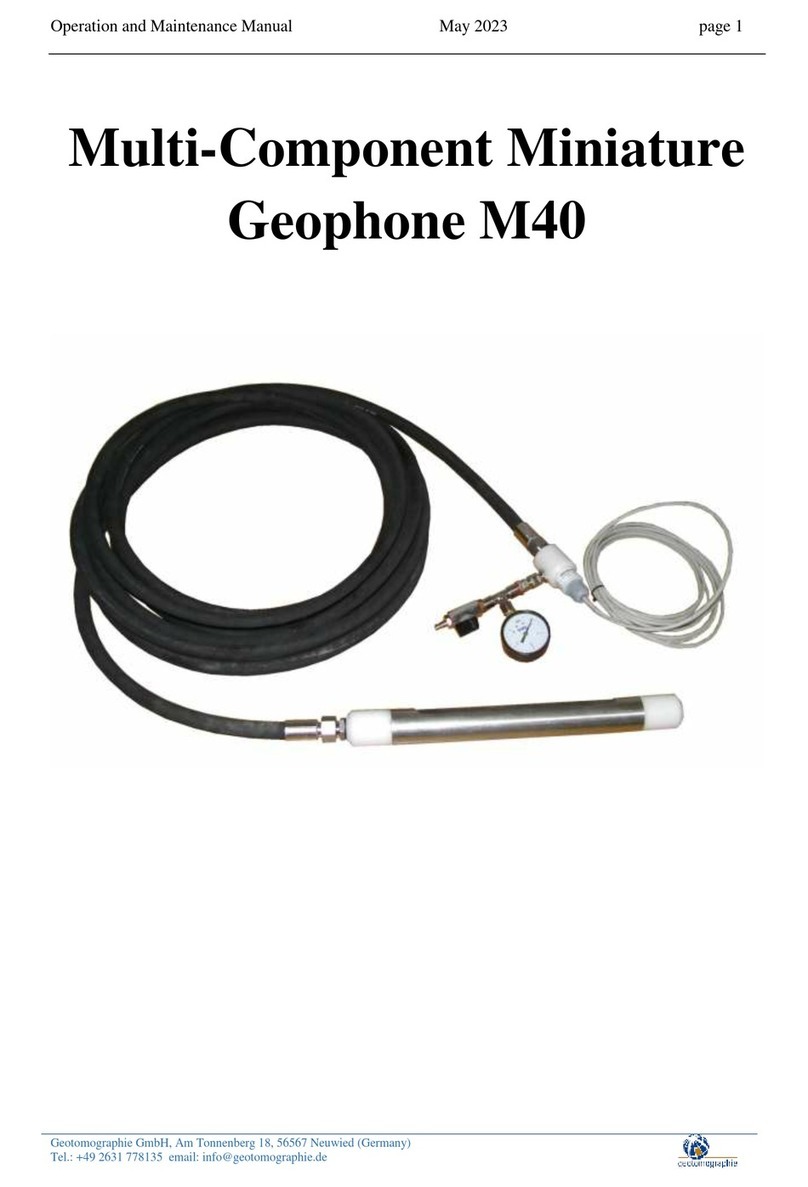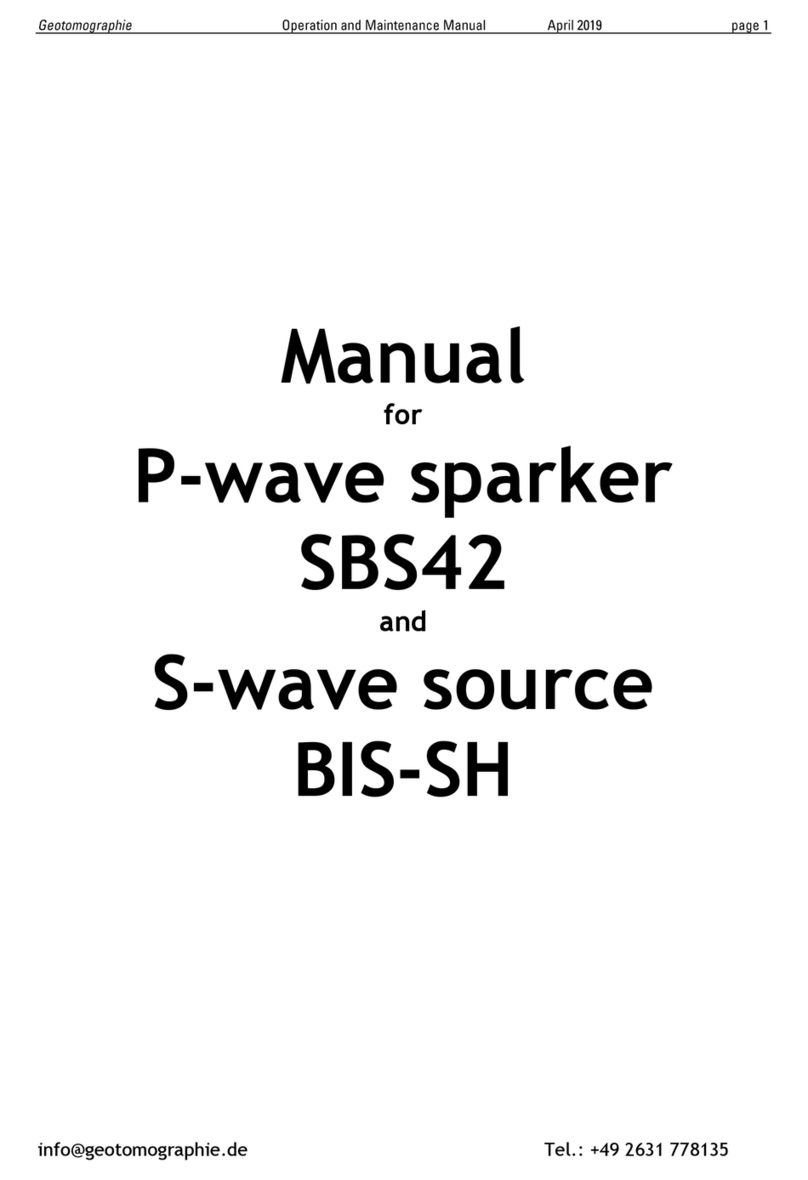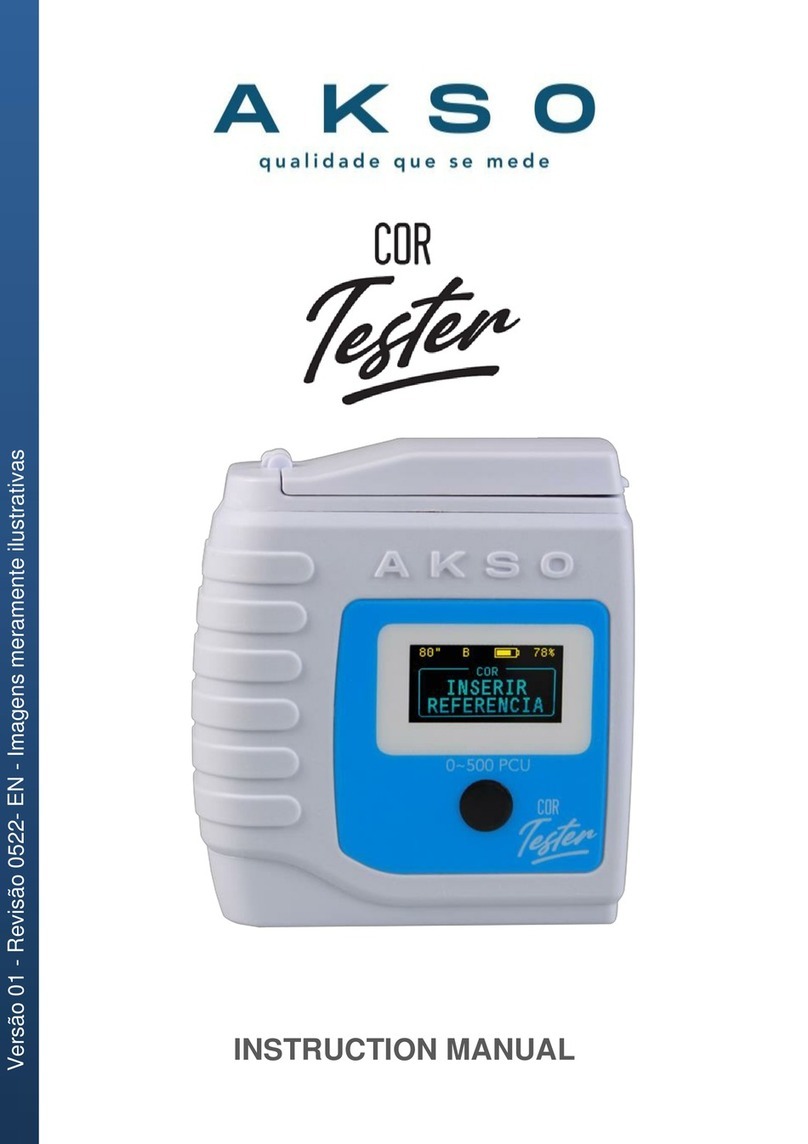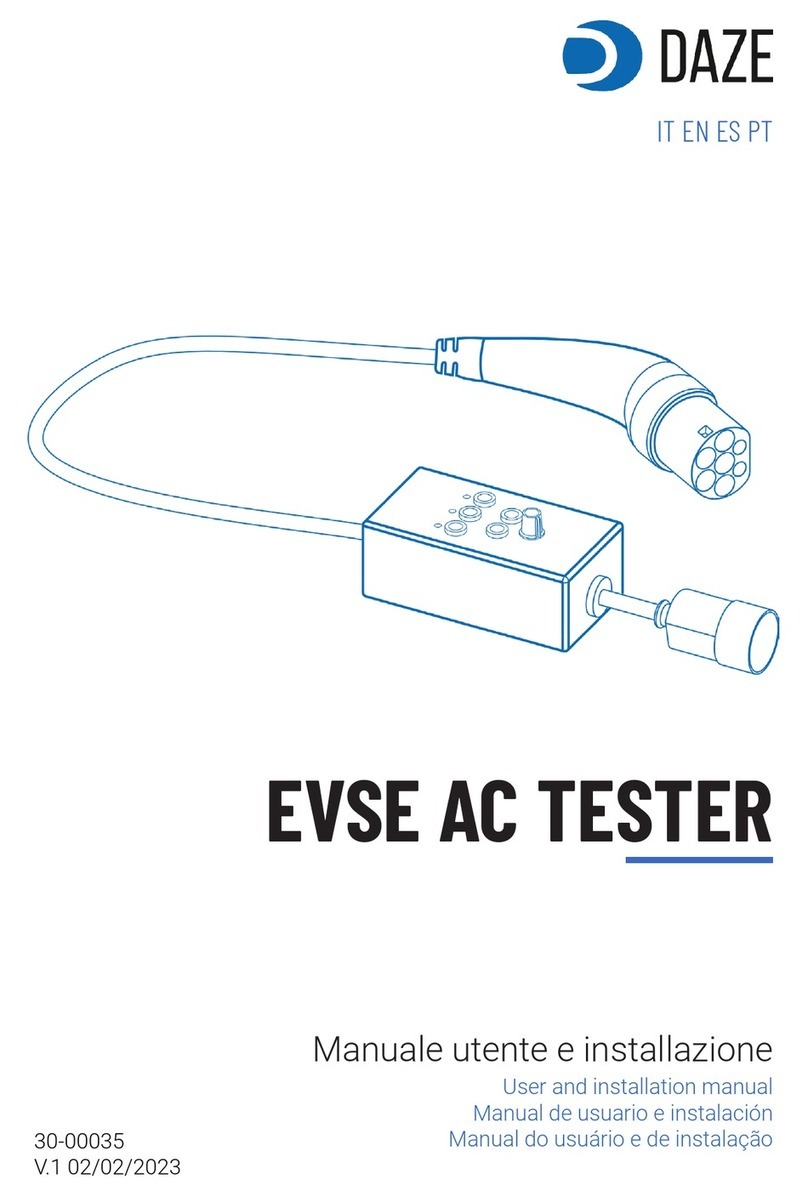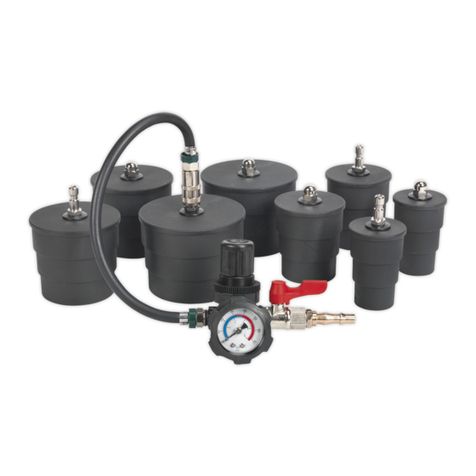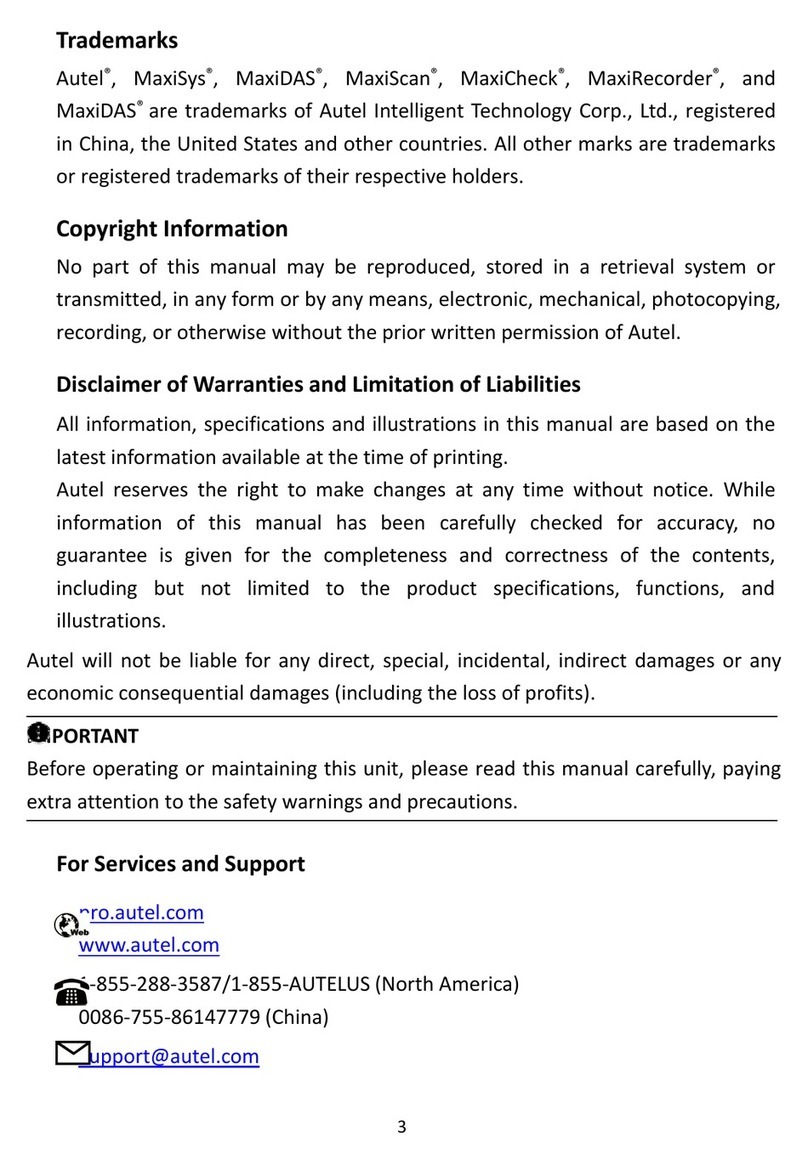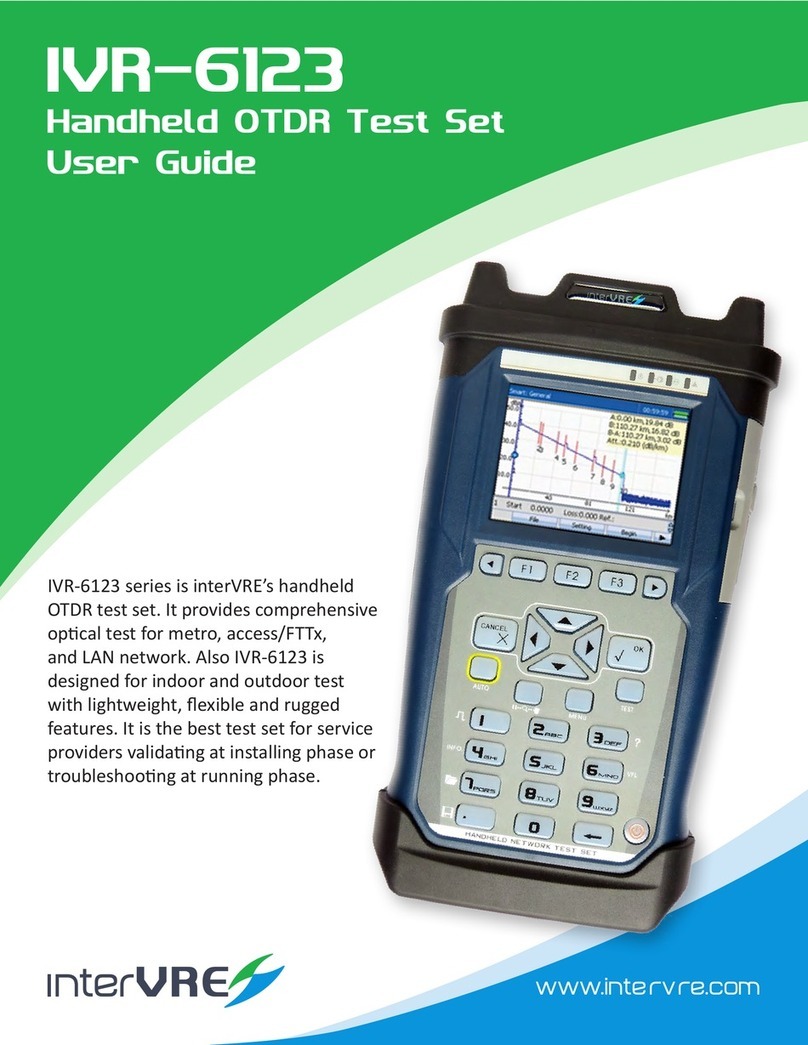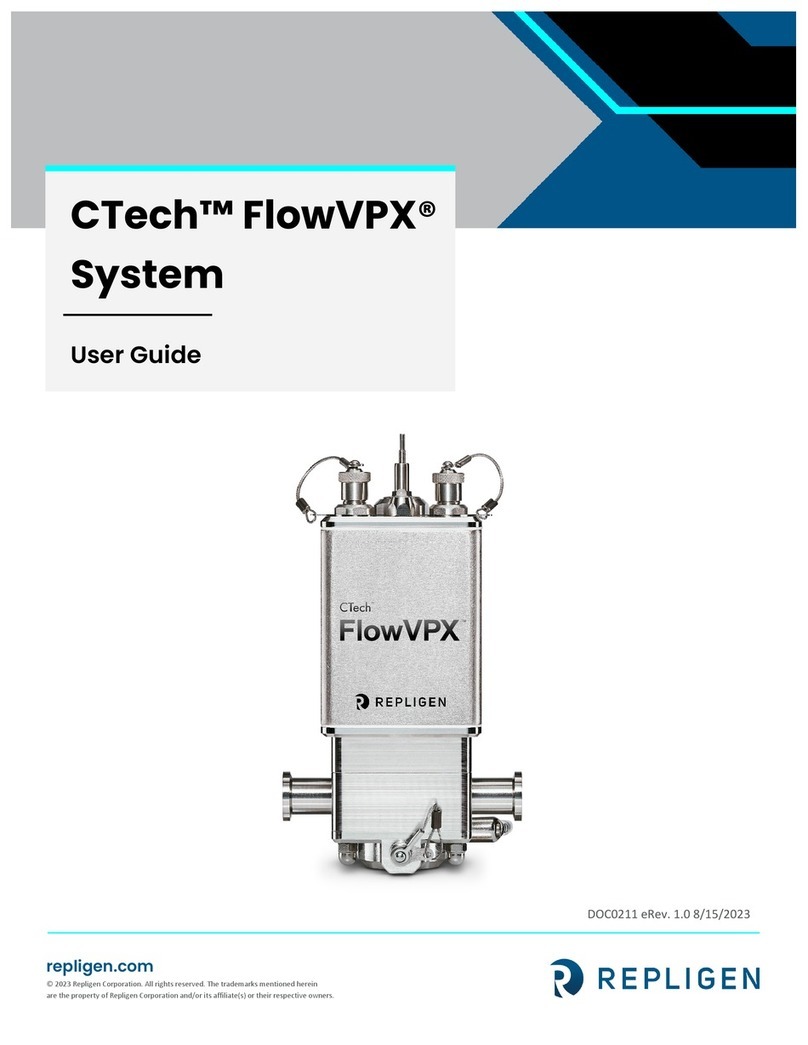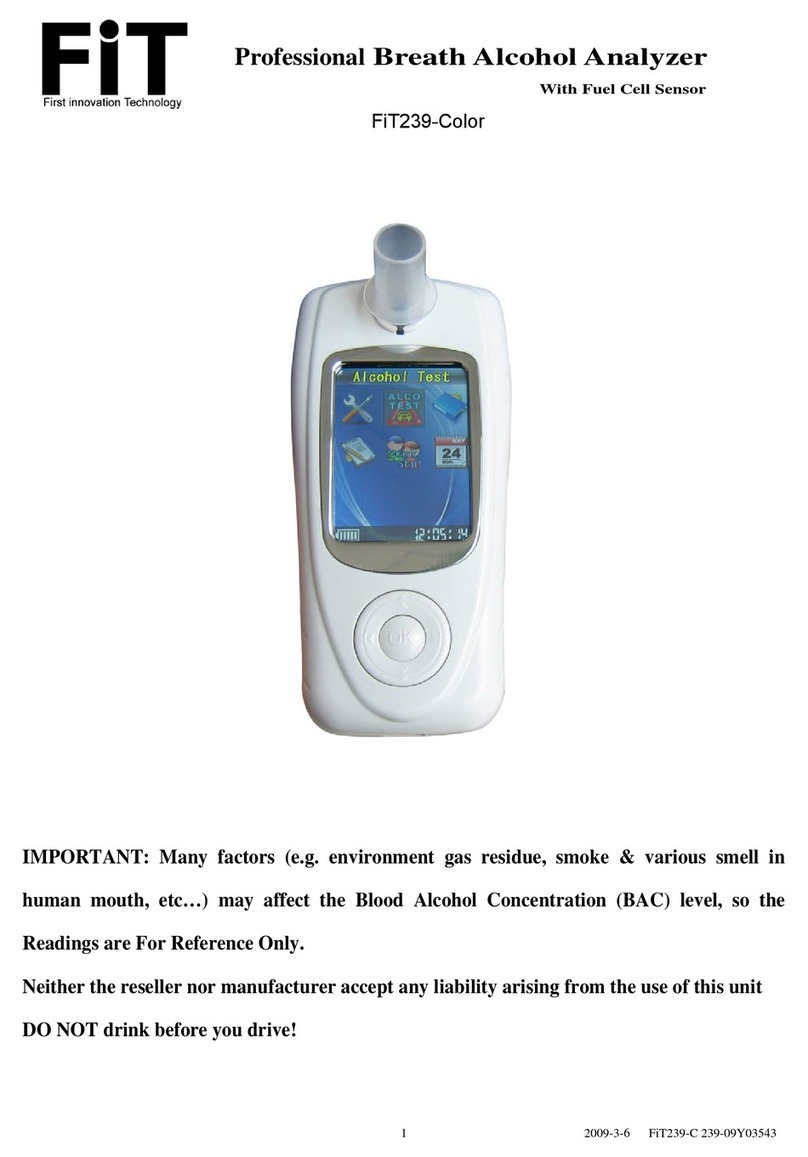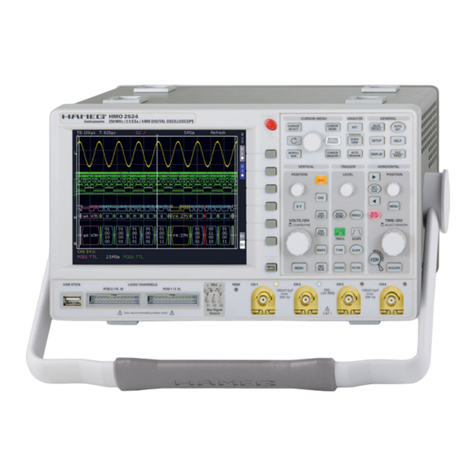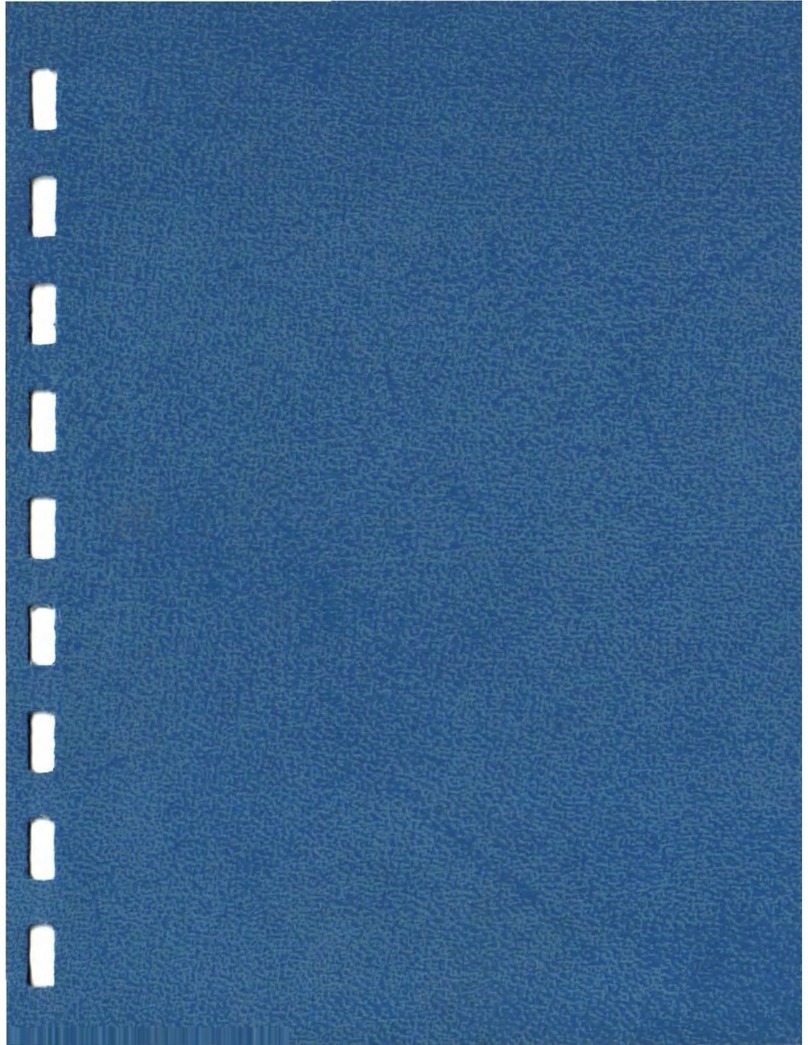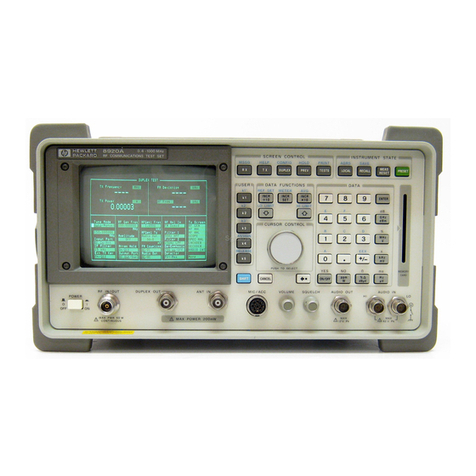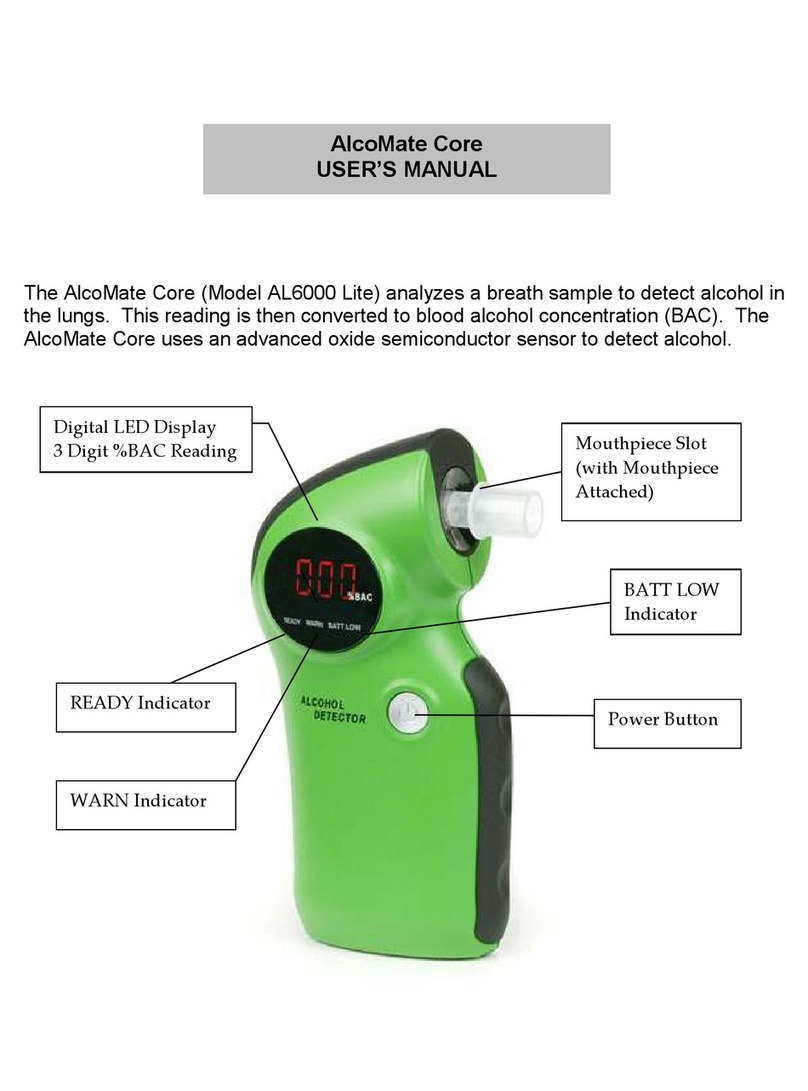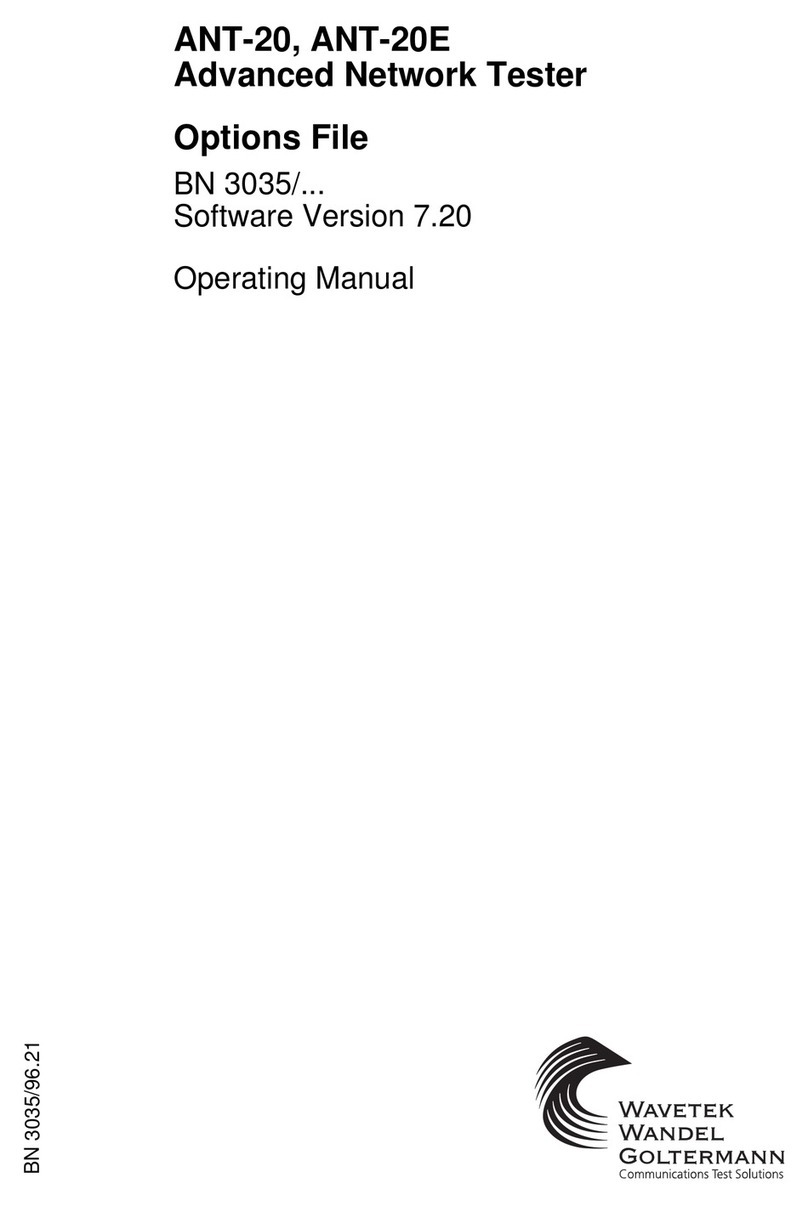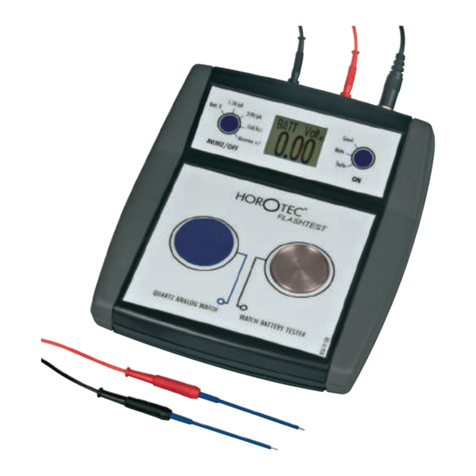geotomographie MBAS-D User manual

Operation and Maintenance Manual May 2023
page 1
Geotomographie GmbH, Am Tonnenberg 18, 56567 Neuwied (Germany)
Tel.: +49 2631 778135 email: info@geotomographie.de
MBAS-D
Digital Multistation Borehole
Acquisition System

Operation and Maintenance Manual May 2023
page 2
Geotomographie GmbH, Am Tonnenberg 18, 56567 Neuwied (Germany)
Tel.: +49 2631 778135 email: info@geotomographie.de
Content
1. Introduction ............................................................................................................................................................ 3
2. General set-up of the MBAS-D .............................................................................................................................. 3
3. 3C Sensor Orientation ............................................................................................................................................ 6
4. Software MBAS-D .................................................................................................................................................. 6
5.1 Connection to 1st Station Probe Head ................................................................................................................. 7
5.2 Connecting Probes .............................................................................................................................................. 9
5.3 End connector ................................................................................................................................................... 10
5.4 Air Supply and Pressure Scheme ...................................................................................................................... 11
5.5 Re-Number Stations .......................................................................................................................................... 12
6. Some Technical Parameters ................................................................................................................................. 13
7. Recommended Software Settings ........................................................................................................................ 14
8. Handling instructions in the field ........................................................................................................................ 15

Operation and Maintenance Manual May 2023
page 3
Geotomographie GmbH, Am Tonnenberg 18, 56567 Neuwied (Germany)
Tel.: +49 2631 778135 email: info@geotomographie.de
1. Introduction
High-resolution P-wave tomographic investigations between boreholes are routinely applied for the
exploration of development sites considered for larger building projects, e.g. power stations, dams and
high-rise buildings. However, the geotechnical benefits of P-wave tomography are rather limited and
information about S-wave velocity distribution is additionally required to derive geotechnically relevant
parameters, such as dynamic soil parameters. Up to now, only little efforts have been made to develop
equipment enabling the competitive acquisition of S-wave crosshole tomographic data.
The Multistation Borehole Acquisition System (MBAS-D) is designed to efficiently acquire S-waves in
dry and water-filled boreholes at different levels. The system is digital and does not require a
seismograph. Each station is equipped with a 3C sensor array and is pneumatically coupled to the
borehole wall by two pressure cylinders.
2. General set-up of the MBAS-D
The Digital Multistation Borehole Acquisition System (MBAS-D) is a digital three-component geophone
string which does not require a separate seismograph. Up to ten individual stations with a tri-axial sensor
array can be connected. The stations are aligned to ensure that all horizontal sensors are oriented in same
direction meaning that all X and Y components are aligned. To orientate the MBAS to an optimum
recording position, a rotating string hose is used. The hose is flexible for winding on a drum, but stiff
when trying to rotate it. This makes it easy to turn the MBAS in any direction.
Figure 1: General set-up of the MBAS-D

Operation and Maintenance Manual May 2023
page 4
Geotomographie GmbH, Am Tonnenberg 18, 56567 Neuwied (Germany)
Tel.: +49 2631 778135 email: info@geotomographie.de
Each station is clamped to the borehole wall by two pneumatic cylinders.
An external trigger can be plugged into the USB interface on surface which is connected to a laptop. The
operation is entirely controlled by the acquisition software. A separate seismograph is not required.
Additional 3C stations can be added by simply plugging them into the bottom last station.
The MBAS-D system consists of
(1) USB interface with cables (USB to laptop, trigger cable, dead end plug) (see Figure 2)
(2) MBAS-D Rotary string on drum with surface connector and probe head (see Figure 3)
(3) MBAS-D stations (N x of 3C stations, maximum number of stations 10) (see Figure 4)
(4) Software
Figure 2: USB Interface with USB connection to laptop, trigger cable, cable to string and small surface
end plug

Operation and Maintenance Manual May 2023
page 5
Geotomographie GmbH, Am Tonnenberg 18, 56567 Neuwied (Germany)
Tel.: +49 2631 778135 email: info@geotomographie.de
Figure 3: MBAS-D Rotary String
Figure 4: MBAS-D stations

Operation and Maintenance Manual May 2023
page 6
Geotomographie GmbH, Am Tonnenberg 18, 56567 Neuwied (Germany)
Tel.: +49 2631 778135 email: info@geotomographie.de
3. 3C Sensor Orientation
Each station is equipped with a digitising unit and a 3C geophone system. The X-direction points to the
north, i.e. in the direction of the pneumatic cylinders.
Figure 5: Station with 3C sensor orientation
4. Software MBAS-D
The MBAS-D software is provided in cooperation with company Moho (www.moho.world). It is their
proprietary versatile software SoilSpy Rosina software. For software instructions please refer to the
SoilSpy Rosina software manual.
SoilSpy Rosina is the software tool used to establish communication with the MBAS-D stations, to
acquire recordings and to store data on a PC.
Note: For the system to work, the SoilSpy Rosina USB interface must be recognised by the PC operating
system as a COM (communication) port. To do this, you will need to install the USB interface driver.
Please follow the instructions in the SoilSpy Rosina manual (see PC Settings).
Note that the trigger channel is set to USB. Station channels can be renumbered if a station is lost or has
a poor signal.
Function Channel Number
Trigger USB
1
st
Station 1 (X),2 (Y),3 (Z)
2
nd
Station 4 (X),5 (Y),6 (Z)
3
r
d
Station 7(X), 8(Y), 9(Z)
… …
It is essential that the channels are numbered starting from 1.

Operation and Maintenance Manual May 2023
page 7
Geotomographie GmbH, Am Tonnenberg 18, 56567 Neuwied (Germany)
Tel.: +49 2631 778135 email: info@geotomographie.de
5. Hardware MBAS-D
5.1 Connection to 1st Station Probe Head
The MBAS-D hardware consists of the USB interface, a trigger channel, the cable connection to the
MBAS-D stations and the MBAS-D stations. Figure 6 shows the arrangement from PC to probe head.
Figure 6: MBAS-D arrangement up to probe head
Arrangement:
1: Laptop with USB Port
2: USB Interface with USB cable and connector to trigger
3: Surface connector with cable take out to trigger and air take out
4: Probe head with LEMO 4 pin socket and air connector
Depth reference is the middle of the uppermost 3C station. To get total depth of lowest station you
may add the number of all station N-1 times the spacing between the stations
1
2
3
4

Operation and Maintenance Manual May 2023
page 8
Geotomographie GmbH, Am Tonnenberg 18, 56567 Neuwied (Germany)
Tel.: +49 2631 778135 email: info@geotomographie.de
Connect the first station to the probe head (see Figure 7) and connect the data cable and air hose (see
Figure 8).
Figure 7: Screw first station to probe head
Figure 8: Connect data cable (tightly) and air hose

Operation and Maintenance Manual May 2023
page 9
Geotomographie GmbH, Am Tonnenberg 18, 56567 Neuwied (Germany)
Tel.: +49 2631 778135 email: info@geotomographie.de
5.2 Connecting Probes
To connect stations use the connecting cable and follow the procedure shown in Figure 9 to Figure 14.
Ensure that all probes are aligned in same direction.
Figure 9: Station Connecting Cable Figure 10: Put data cable trough side opening
Figure 11: Screw nut Figure 12: Use box wrench and spanner
Figure 13: Fit tightly Figure 14: Connect data cable to probe

Operation and Maintenance Manual May 2023
page 10
Geotomographie GmbH, Am Tonnenberg 18, 56567 Neuwied (Germany)
Tel.: +49 2631 778135 email: info@geotomographie.de
Fasten the data cable to the 3C probe finger-tight.
Push in and screw.
Push in again and screw until the connector cannot be pushed in any further.
Screw as tightly as possible.
5.3 End connector
Fit the end connector (see Figure 17) to the bottom 3C station as tightly as possible to terminate
the data link.
Figure 17: End connector
Figure 18: End connector attached

Operation and Maintenance Manual May 2023
page 11
Geotomographie GmbH, Am Tonnenberg 18, 56567 Neuwied (Germany)
Tel.: +49 2631 778135 email: info@geotomographie.de
5.4 Air Supply and Pressure Scheme
Stations must be clamped to the borehole wall to operate correctly. Surface air is supplied via the surface
connector (1) (see Figure 19).
Figure 19: Surface Air Supply by pump or pressurized gas
Each station is equipped with two air cylinders type, Clippard AF-FSR-10-5/8 (see Figure 20).
The air cylinder is allowed to be pressurized by max 17 bar. The air hose type URH1-0804-YLT-050 has
a working range from 0-7 bar and a burst pressure of approximately 19 bar.
Figure 20: Clippard Air Cylinder (picture is courtesy of from Clippard, USA)

Operation and Maintenance Manual May 2023
page 12
Geotomographie GmbH, Am Tonnenberg 18, 56567 Neuwied (Germany)
Tel.: +49 2631 778135 email: info@geotomographie.de
Do not pressurise above the burst pressure of 19 bar.
A pressure of approximately 3 to 4 bar above the hydrostatic water pressure is recommended to
properly clamp the stations to the borehole wall. However, it is recommended that this is checked
once all the stations are in the borehole by testing different pressure regimes. Use the pressure
where it will clamp tight.
Due to the mode of operation, the clamping force of the cylinder is increased by approximately 3
times the applied pressure.
The MBAS-D is designed to work in 3 inch boreholes. The air cylinder piston length is about 0,5
inch (~12mm). If spacers are used, ensure that the piston stroke is sufficient to clamp the stations
to the borehole wall.
Note: If the piston does not return to its original position, the dead end screw on the air cylinder
must be opened to release the pressure.
5.5 Re-Number Stations
Station numbering must be in sequential order.
If a station is damaged and not working, the following station numbers must be reduced by 3 (=number of
channels). For example, if station 5 is broken (channels 13, 14 and 15 are missing). This station must first
be physically removed and then the other stations (and their channels) must be renumbered by -3.
Procedure of re-numbering stations.
Connect the USB interface directly to the surface connector
Connect all the stations that need to be renumbered.
Establish a data connection using the SoilSpy Rosina software and follow the renumbering
instructions in the software manual (look for "Shift Numbers" in the manual).

Operation and Maintenance Manual May 2023
page 13
Geotomographie GmbH, Am Tonnenberg 18, 56567 Neuwied (Germany)
Tel.: +49 2631 778135 email: info@geotomographie.de
6. Some Technical Parameters
Weight: ~ 3 kg per station
Voltage: min. 3.3 V (PC USB interface)
Geophones: 10 Hz
Seismic Channels: 3 Geophones per station
A/D CONVERSION: 24 bit @ 128 Hz
Sample Frequency: 256, 512, 1024, 2048, 4096, 8192, 16384, 32768 Hz
Stacking: plus/minus option on every stack
Dynamic Range: 142 dB
CROSS-TALK: non-existent (digital transmission)
MAX CHANNEL: 255
TRIGGER: TTL
PRE-TRIGGER: up to 1 s
Noise Monitor: Continuous

Operation and Maintenance Manual May 2023
page 14
Geotomographie GmbH, Am Tonnenberg 18, 56567 Neuwied (Germany)
Tel.: +49 2631 778135 email: info@geotomographie.de
7. Recommended Software Settings
Follow the SoilSpy manual for installation.
Once a USB connection is established and the software is running, you can connect the laptop to
MBAS-D stations
Select the 'Set Trigger' command (1) from the Parameters window and set the Device to 'USB'
(2).
It is also recommended to set a minimum pre-trigger time (3).
Set the recording length (duration) to at least 2 x the maximum expected travel time. (4)
Set the Trigger threshold to High. (5)
We recommend a high sampling rate for crosshole surveys of at least 8KHz, better 16KHz (6).
You may increase the gain by setting the “Resolution in V/digit”, the smaller the finer the
amplitude steps.
Figure 21: Software Settings

Operation and Maintenance Manual May 2023
page 15
Geotomographie GmbH, Am Tonnenberg 18, 56567 Neuwied (Germany)
Tel.: +49 2631 778135 email: info@geotomographie.de
8. Handling instructions in the field
One MBAS-D station weights 2.5kg. Therefore, the weight for 10 stations (maximum number of stations)
and 100m cable with 460g/m is together 71kg which is quite heavy.
It is recommended to use a tripod or a suitable clamping device to lower the MBAS-D system into the
borehole. Please be careful when handling the heavy equipment and follow the health and safety
regulations. Never try to hold the weight on the connecting cables between the stations.
Do not bend the connection cables between the stations below a radius of 15cm. This applies even if
the stations are placed on the ground.
Figure 22: Handling in field
If there is sufficient space in the field, we recommend that the MBAS-D stations are placed straightened
on a level surface.
Safety instructions:
Do not cut cable.
Do not override the cable
Do not over pressure the packer of the stations.
Table of contents
Other geotomographie Test Equipment manuals
